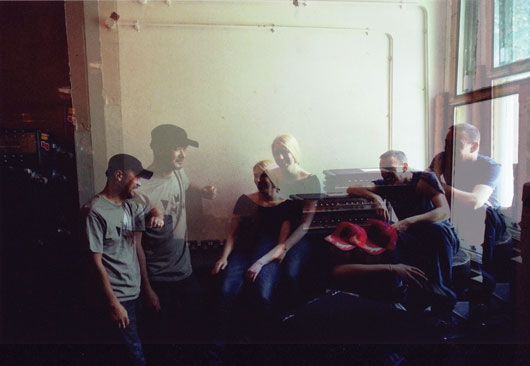Seefeel’s Studio Approach
Ever since their genesis in the ’90s, UK outfit Seefeel has straddled the line between […]

Ever since their genesis in the ’90s, UK outfit Seefeel has straddled the line between electronic and ambient rock music so craftily that they’ve more or less erased it altogether. Whether crafting Krauty, atmospheric shoegaze, or remixing their peers, the quartet—whose founding members Mark Clifford and Sarah Peacock have since adopted bassist Shigeru “Shige” Ishihara (a.k.a. DJ Scotch Egg) and former Boredoms drummer Iida Kazuhisa—continues to make music that is simultaneously challenging and breathtaking, particularly on their recently released, self-titled Warp full-length. Here Clifford tells us about some of the considerations that went into making the LP, and what you might consider for your own productions.
Approach every song differently
I try not to really approach recording with a set method. “Aug30,” for example, was a jam that Shige and I did, and what you hear is pretty much as it happened—bar a few edits, as the track was much longer. On the other hand, “Faults” began as a programmed rhythm and it gradually progressed by adding vocals to a very different guitar part. Then Shige added bass, which then changed as a new guitar part was added. It was very much a studio track passing back and forth between us and being built up and stripped back over a few weeks. So the process varies, but all guitars and vocals are processed before they go onto hard disk, and very few plug-ins or computer processes are used [prior to editing].
Experiment with guitars, strings, and tuning
I tend to use Strat-like guitars for the most part because they give lighter sounds, which suits the effects I like to use. Likewise, I use a very light-gauge string. Often, I tune the guitar so I have two or more strings more tightly strung. For example, I will tune the G string to a B-flat because I like the tone this can add.
Merge live instruments with electronic elements when it feels right
I think it’s always important to not think of things as electronic or rock, because they are just elements of the whole. So I would never add an electronic part for the sake of it or to make it some kind of hybrid. I only use what I think works with a particular track. I have never thought, “Too many real rock sounds in this track—better add an electronic part.” It’s just whatever works for each track.
Manage your live set-up and studio set-up
The live set-up can be more restrictive than the studio, which forces you to be creative—in the sense that we might, for example, use analog reverbs or delays in the studio which are too cumbersome to tour with, so they’re replaced by simpler units for the stage. We also use backing tracks live to play mainly percussion parts. Of course, it would be nice to have a percussionist to recreate those parts, but this is where knowing what elements don’t need as much human touch as others comes in handy, and that takes time, and good ears, to perfect. But for the most part, I think live, we use pretty much what we use in the studio, certainly as far as the guitars go.
Use effects to round out your sound
Despite it being maybe the least noticed by most people’s ears, compressors were the most used piece of outboard gear on the new album. Practically every part is compressed to some extent, and some vocal and guitar parts are heavily gated. I find it much easier to mix when each part sits in its own space. Likewise, EQ is also a very important tool!
Seefeel is out now on Warp.

